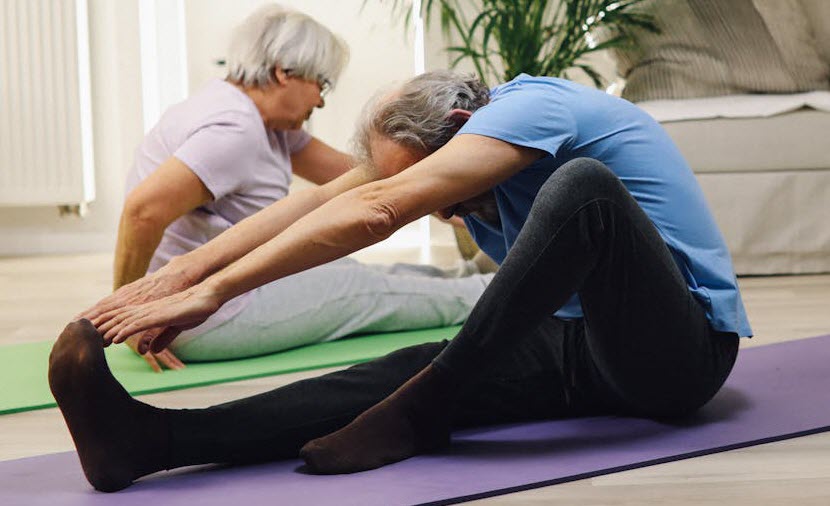
How to Adapt Strength Training for Common Age-Related Ailments
Strength training is a crucial component of healthy aging, helping to maintain muscle mass, improve bone density, and enhance overall vitality. However, for many older adults, age-related ailments such as arthritis, joint pain, or osteoporosis can make traditional strength training exercises more challenging. The good news is that with a few adjustments, strength training can be made safe and accessible for everyone, regardless of physical limitations. Here’s how you can adapt strength training to accommodate common age-related ailments and keep building strength.
Understanding Age-Related Ailments
As we age, conditions like arthritis, osteoporosis, and general joint pain can become more prevalent. Arthritis, which causes inflammation in the joints, can lead to stiffness and discomfort during movement. Osteoporosis, a condition where bones become brittle and fragile, increases the risk of fractures. Despite these challenges, strength training remains one of the most effective ways to manage these conditions, improve mobility, and protect bone health.
Key Modifications for Common Ailments
1. Arthritis and Joint PainArthritis can make weight-bearing exercises or high-impact activities uncomfortable. To adapt strength training for arthritis:
- Use Lighter Weights or Resistance Bands: Resistance bands or light weights can help build strength without putting too much strain on the joints.
- Focus on Low-Impact Exercises: Exercises like seated leg raises, wall push-ups, and water-based resistance training are gentle on the joints while still providing a solid workout.
- Incorporate Joint-Friendly Movements: Use slow, controlled movements with a focus on form to avoid aggravating the joints.
With osteoporosis, it’s essential to strengthen the muscles surrounding the bones while being mindful of avoiding exercises that put excessive pressure on fragile areas.
- Prioritize Weight-Bearing Exercises: Exercises like bodyweight squats, walking, or stair climbing help stimulate bone growth and improve density.
- Avoid High-Impact Movements: Jumping or jerking motions can increase the risk of fractures. Stick to controlled movements, like bicep curls, tricep extensions, and chest presses.
- Focus on Posture and Balance: Exercises that improve posture, like seated rows or wall squats, can help reduce the risk of falls, a common concern for individuals with osteoporosis.
As we age, general stiffness in the muscles and joints is common, but staying active can reduce discomfort and improve flexibility.
- Incorporate Dynamic Stretching: Start each workout with dynamic stretches, such as leg swings or arm circles, to improve flexibility and reduce stiffness.
- Use Slow Progression: Start with smaller ranges of motion and lighter weights, gradually increasing as your flexibility and strength improve.
- Prioritize Core Strength: A strong core helps stabilize the body and reduces pressure on the joints. Simple exercises like seated leg lifts or gentle planks can help improve core strength without stressing the joints.
Sample Strength Training Routine for Seniors with Ailments
Here’s a beginner-friendly strength training routine that incorporates joint-friendly exercises:
1. Seated Leg Extensions (3 sets of 12 repetitions)- Sit on a chair with feet flat on the floor. Slowly lift one leg until it's straight, hold for a moment, then lower it back down.
- Stand a few feet away from a wall, place your hands on the wall at shoulder height, and slowly perform a push-up by bending your elbows and bringing your chest toward the wall.
- Sit comfortably, loop a resistance band under your feet, and hold the ends in each hand. Slowly curl your hands toward your shoulders, focusing on controlled movements.
- Stand in front of a chair with feet hip-width apart. Slowly sit down in the chair, then stand back up, keeping your knees aligned with your toes.
- Hold onto the back of a chair for support. Slowly raise your heels off the floor, standing on your toes, then lower them back down.
Tips for Adapting Strength Training
- Start Slow: Begin with lighter weights or resistance bands and gradually increase the intensity as you become more comfortable and confident.
- Listen to Your Body: If an exercise causes pain, stop and consult with a healthcare provider. It’s essential to distinguish between the discomfort of building strength and joint or muscle pain.
- Incorporate Rest Days: Give your muscles and joints time to recover. Rest is crucial, especially when managing conditions like arthritis or osteoporosis.
Additional Resources
1. National Institute on Aging: Exercise and Physical Activity for Older Adults – A comprehensive guide on the importance of exercise as we age, including safety tips and sample exercises.
2. Arthritis Foundation: 14 Ways to Work Out with Arthritis – Exercise recommendations for people managing arthritis, focusing on joint-friendly exercises.
3. Mayo Clinic: Osteoporosis Exercises: What You Need to Know – Guidelines for exercising with osteoporosis, including tips for strengthening bones safely.Conclusion
Strength training is possible and beneficial for seniors managing age-related ailments like arthritis and osteoporosis. By modifying exercises to suit your individual needs, you can safely build strength, improve flexibility, and protect your joints and bones. Remember to listen to your body, start slow, and prioritize exercises that help you feel stronger and more confident in your daily life.
